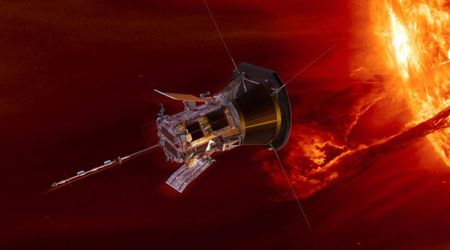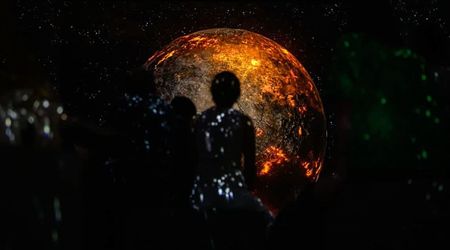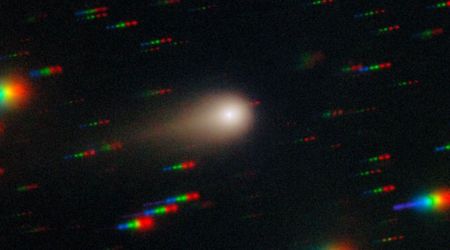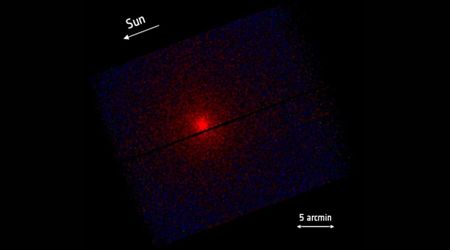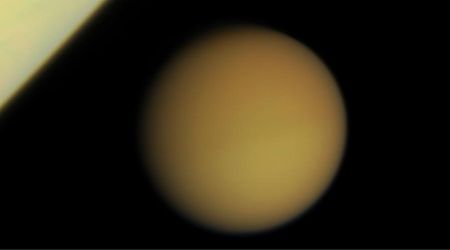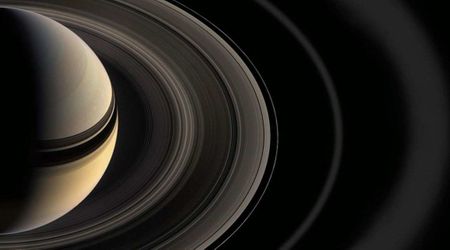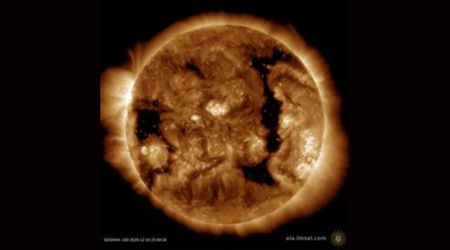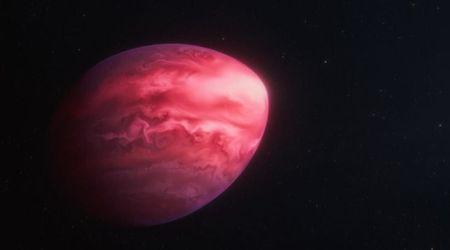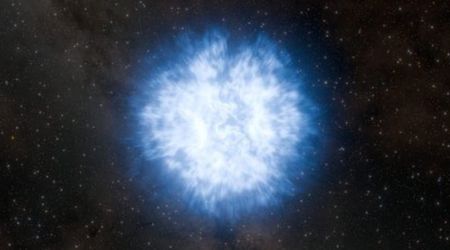The biggest asteroids in the solar system

The biggest asteroids are large pieces of space debris in our solar system that helped shape the space around them. Some theories state that an asteroid with a diameter of about 100 km could wipe out all life on Earth.
Thankfully, none of the asteroids on our list is classified as Near-Earth asteroids (NEAs) because they are much larger than 100 km!
Let's take a look at some of the giant asteroids in our solar system. These behemoths hang out in the asteroid belt between Mars and Jupiter, not too far from Earth in space terms, but far enough :)
1 - Ceres (583.7 miles / 939.4 kilometers)
Ceres is the largest asteroid known to date. To give you an idea of the asteroid's size, it is roughly as big as Alaska, the largest state in the USA. Ceres rotates around the sun once every 1,678 Earth days.
It is the only asteroid large enough for its own gravity to make it round, which is a unique feat in the asteroid world. This is called the "hydrostatic equilibrium" and it was one of the main reasons the debate over its Ceres status took place.
Indeed, this asteroid is so big that in 2006 there was talk about making it the 10th planet of our solar system. However, the scientist instead decided to demote Pluto and raise Ceres to the status of Dwarf Planet.
Although Ceres is classified as a dwarf planet, it is considered by many in the scientific community as an asteroid. Therefore Ceres takes the top spot on this list.
2 - Vesta (326 miles / 525 kilometers)
Vesta is the second-largest asteroid. And even though it is smaller than Ceres, it is a rather bright asteroid that you can sometimes see with the naked eye at night. This fact alone makes Vesta one of the coolest asteroids out there.
Vesta is roughly the size of Texas and North Carolina. It's only half the size of Ceres, but it is still a very massive object in space. Even though it is rather large, the asteroid doesn't quite reach the criteria to gain dwarf planet status.
The asteroid has distinct layers for the crust, mantle, and core, known as differentiation. These layers do help make a case for classification as a dwarf planet, but the odd squished nature of the asteroid doesn't indicate that it is shaped by its own gravity, which negates any chances of a status upgrade, unfortunately.
However, some amazing images of this asteroid are available thanks to the 2011 Dawn Spacecraft mission that orbited this giant rock before reaching Ceres. The Dawn Spacecraft completed its mission in 2018 but continues to orbit Ceres to this day.
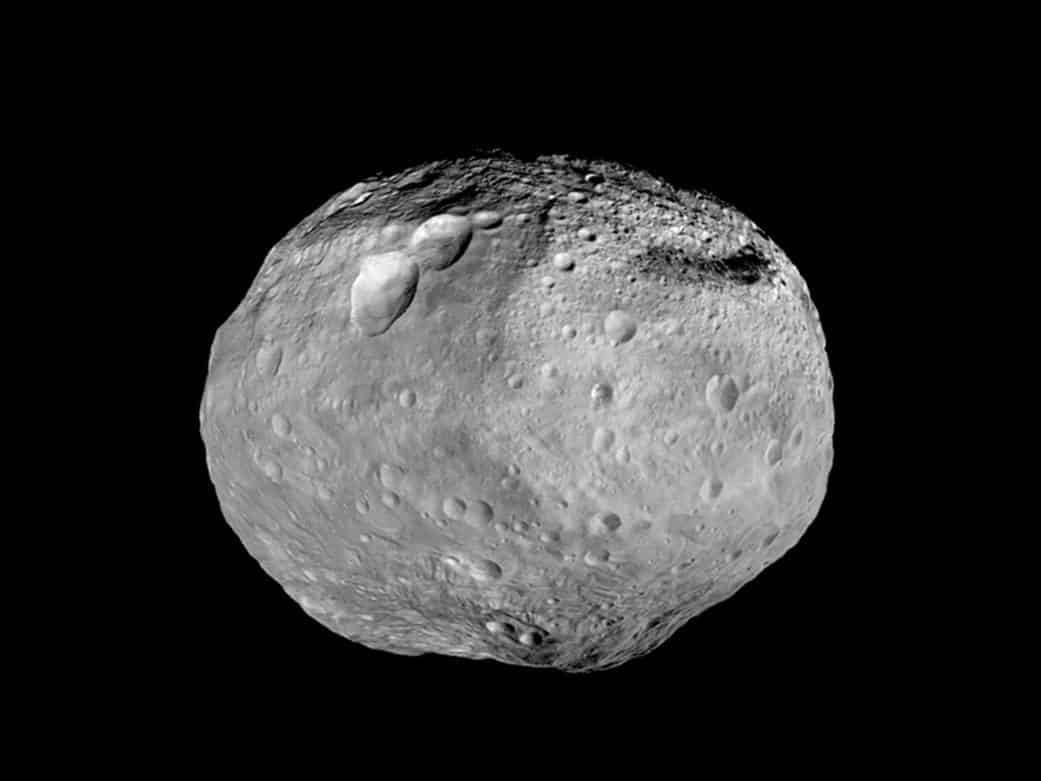
This picture of asteroid Vesta was taken by NASA's Dawn spacecraft.
3 - Pallas (318 miles / 513 kilometers)
Pallas the third largest asteroid on our list. At the time of its first classification back in 1802, it was considered a planet. However, as more asteroids were later discovered, it soon became apparent that science needed a new title for these small celestial objects.
For a long time, due to the similar size of Pallas and Vesta, there was a debate as to which one was bigger. However, it seems that Vesta has now won that battle. Pallas is about the size of Britain.
Unfortunately, due to the highly inclined plane of its orbit, it is not very easy for spacecraft to reach it, so the Dawn Spacecraft didn't pay Pallas a visit.
Its strange orbit may also explain the number of collisions that Pallas has encountered. Indeed, its surface is more covered with craters than Ceres or Vesta. Some studies of the asteroid suggest that it may have satellites, but so far scientists have not observed any.
4 - Hygiea (270 miles / 444 kilometers)
One of the most exciting things about asteroid Hygiea is that it may be in consideration to become the smallest dwarf planet in the solar system. Even though it isn't as big as the other asteroids, it is very close to achieving hydrostatic equilibrium, which is a significant milestone for the status change.
Some debate the rounding effect and claim that a head-on collision with another space rock caused the rounded appearance and not the force of the asteroid's gravity. Many people are still trying to find out what happened in order to give the asteroid its right classification.
Hygiea takes over 27 hours to complete a single rotation on its axis, which is 20 hours more than Pallas. Scientists have yet to determine the cause of this massive difference.
Iowa and Hygia are about the same size. The asteroid is darker than many because of its location near the outer limits of the belt. It is hard to see even with the help of telescopes.
5 - Interamnia (196.74 miles / 306 kilometers)
Interamnia is the last asteroid discovered on this list, and Astronomers only discovered it in 1910 by Vicenzo Cerulli. However, scientists haven't studied it nearly as well as the big four asteroids, so there is still a lot to learn about this massive space object.
More study may be required for this asteroid because there are some indications that it may also have hydrostatic equilibrium.There are some signs that Interamina is a very dense asteroid for its size. The density may help it round itself and get its dwarf planet status above some of the bigger asteroids on this list.
Like Hygia, it is harder to see due to its lower light reflection and its distance from the sun. With a size comparable to Portugal, it is still an incredibly huge asteroid. It has a slightly irregular orbit, which may affect the future study of the asteroid.

This image of asteroid Interamnia was taken in 2017 by the European Southern Observatory (ESO).
6 - 52 Europa (188.85 miles / 306 kilometers)
Don't confuse 52 Europa with the much larger moon of Jupiter. Even though scientists knew about 52 Europa since 1858, it was once erroneously thought to be a cataclysmic variable star in 1934.
For over 50 years, people considered 52 Europa to be the 5th largest asteroid in the solar system, but there is still a lot more to learn about this behemoth. It is about the same size as the country of Austria.
Due to mixed data, some measurements of this asteroid have been disputed, including its shape and rotational time. However, with more modern calculations, these have been cleared up. A 1988 study of the object determined there were no natural satellites for Europa.
Even though this asteroid may seem small compared to some of these other giants on the list, it is still huge by asteroid standards. It orbits close to the Hygia family, but it is considered distinct from that group based on composition.
7 - 511 Davida (176 miles / 270 kilometers)
511 Davida is a large asteroid in the asteroid belt between Mars and Jupiter. It was discovered in 1903 by Raymond Smith Dugan and is named after David Peck Todd, an astronomy professor at Amherst College.
The '511' part of its name simply means that it was the 511th asteroid to be officially added to the list of asteroids maintained by the International Astronomical Union.
Davida has an estimated diameter of about 270 km and is classified as a C-type asteroid, meaning it is likely composed of carbon-rich materials. It has an oblong shape as discovered by the W.M. Keck observatory which managed to take the first-ever picture of this asteroid.
Davida is currently orbiting the Sun at a safe distance from Earth. Traveling at an average speed of 16.77km/s, the asteroid takes 5.61 years to complete a full orbit.

This image of asteroid 511 Davida was taken in 2003 by the W.M. Keck observatory.
Monitor the largest asteroids in real-time
The world's hub for space exploration, NASA has recently provided the public with access to their new online application called "Eyes on asteroids".
This ingenious program allows asteroid enthusiasts to monitor and track any Near-Earth Objects (NEOs) that fly through our solar system. If you are interested in checking out the position of the largest asteroids, follow this link.
You'll also be able to check out the five closest approaches coming near Earth in just one easy step - all while learning more about these fascinating cosmic objects along the way.
For up to date information on asteroids of all sizes, follow Asteroid Watch on Twitter.

This interactive map is a treasure trove of information on all currently known asteroids in the solar system.
What else is out there?
These asteroids are so massive that combined, they account for almost 50% of the asteroid belt's total mass, but they only scratch the surface of what is out there.
The odds of any of the largest asteroids getting near Earth are negligible. Even if a large enough asteroid becomes a problem, Nasa is working on redirecting potential problems away from Earth.
These are only the six biggest asteroids in our solar system. What's out there beyond our sight? We only discovered the first Exoplanet in 1992. It will be some time before we start learning about asteroids in other solar systems.
Space is vast and fascinating, and people find new objects all the time that add to our understanding. You can see many of the asteroids above with a basic telescope or a pair of astronomy binoculars. Get out there and start looking at the night sky. You never know what you might see.
